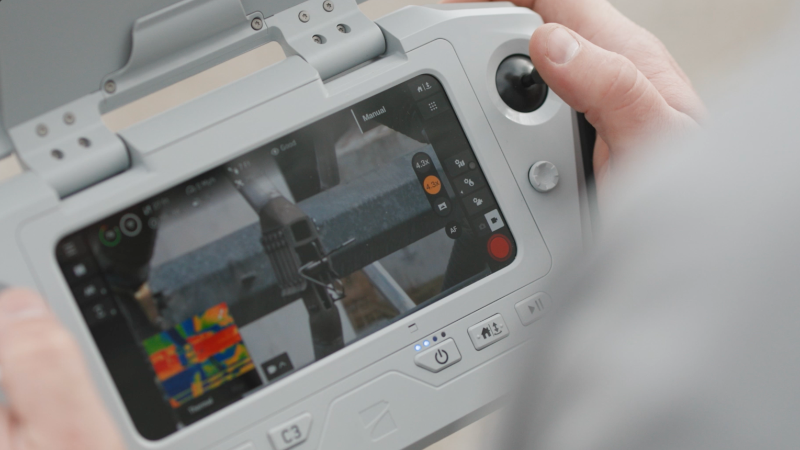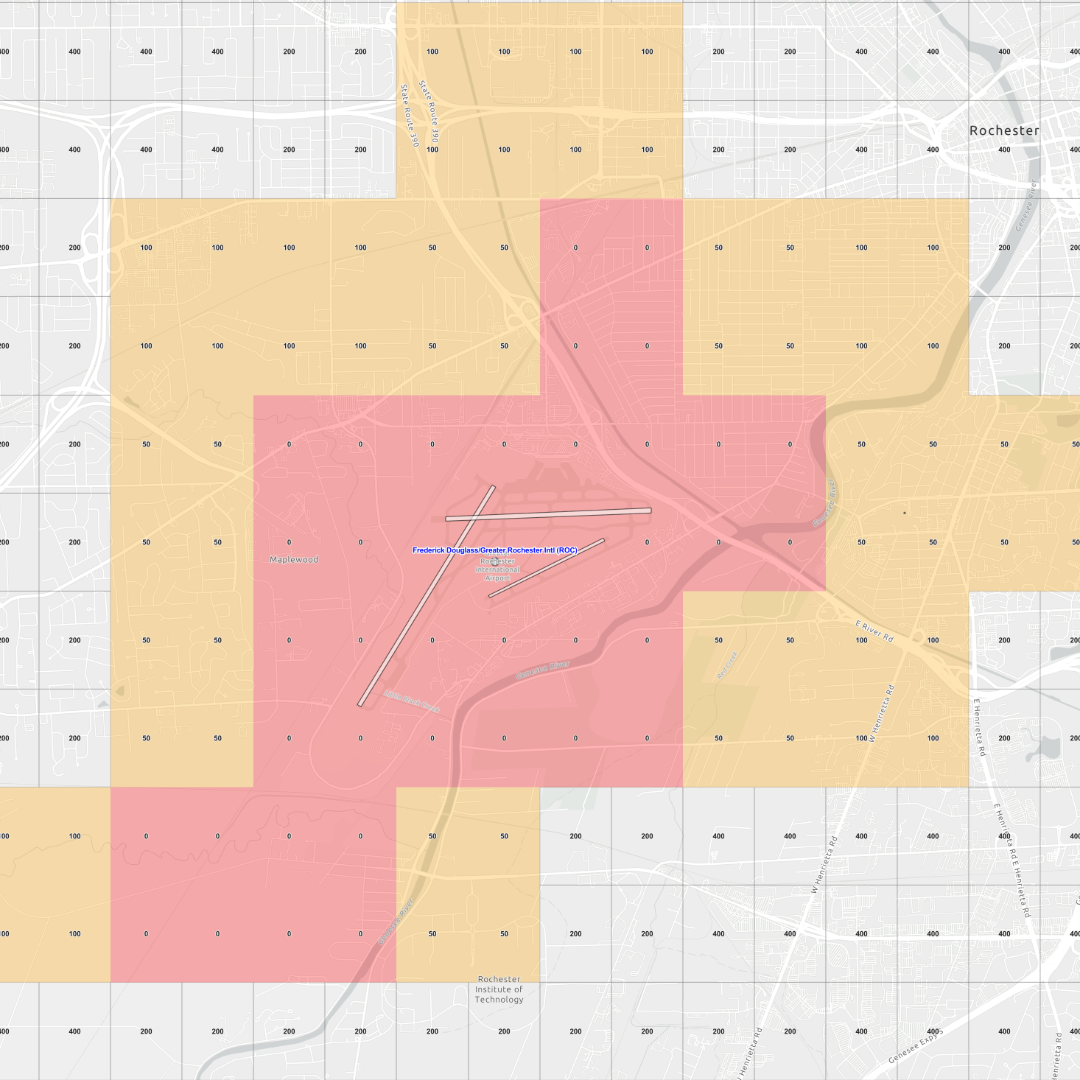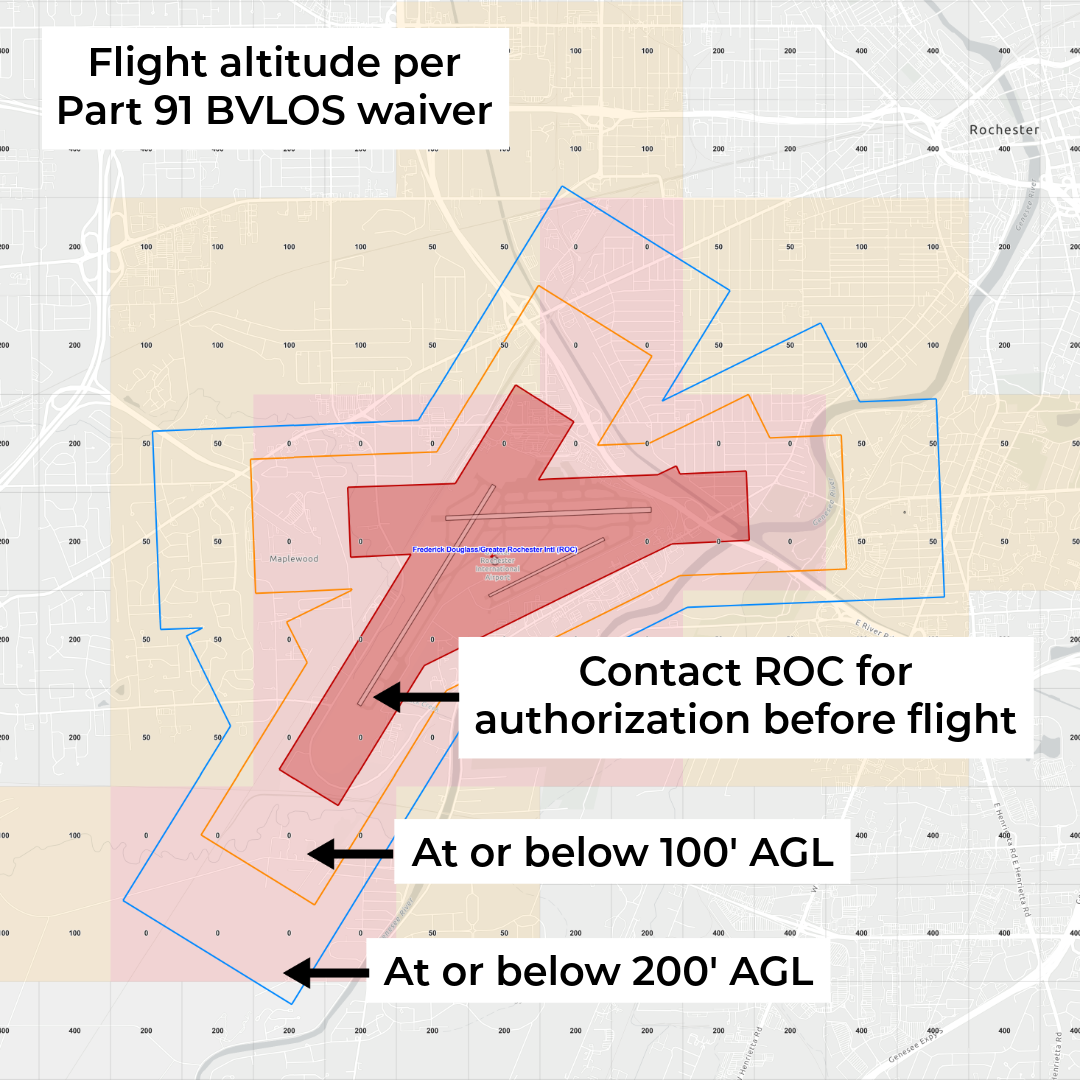HOW TO
Obtain a Public Safety Part 91 BVLOS Waiver
Published 9/10/2025
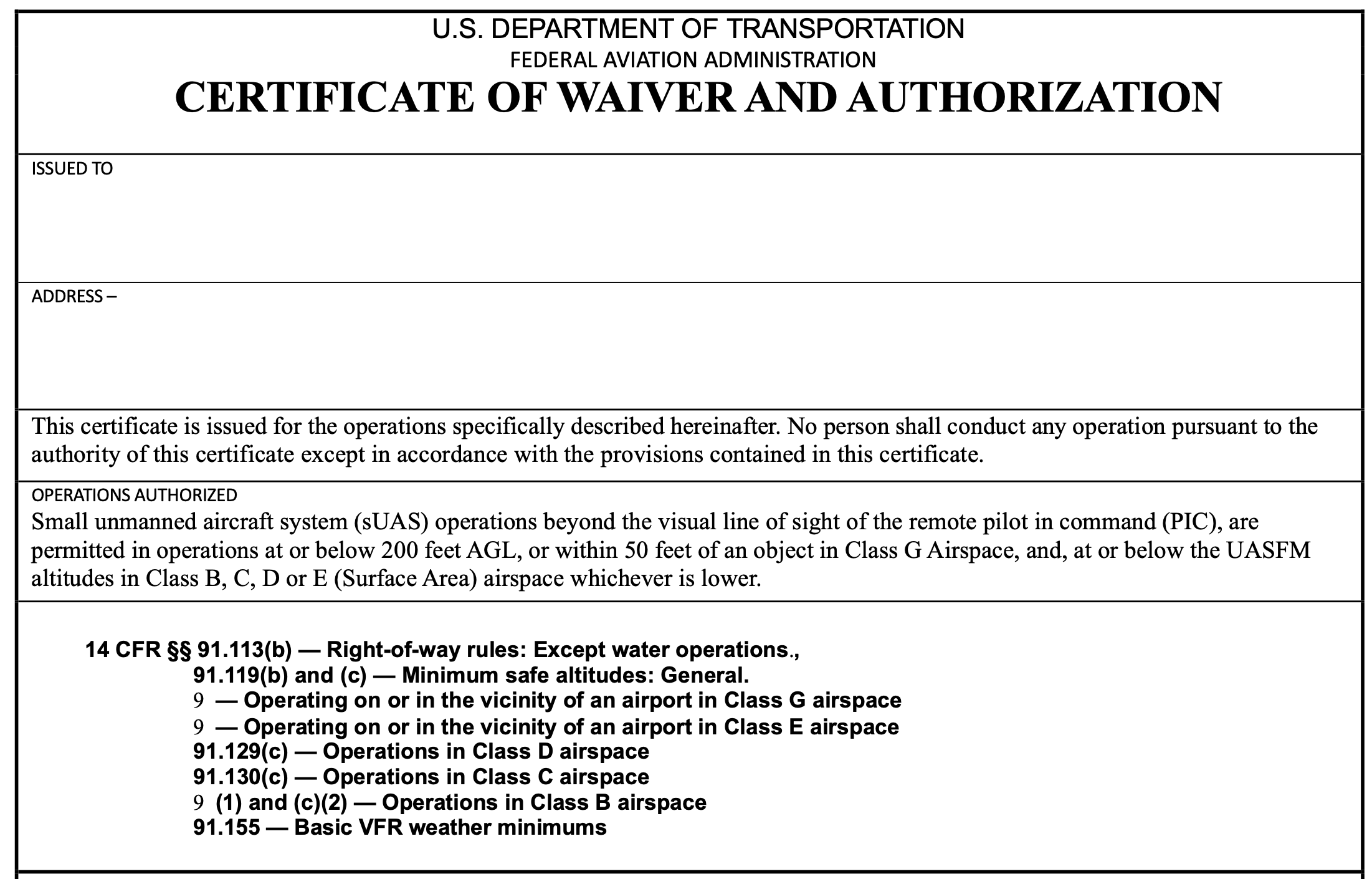
The Skydio Regulatory Team has developed this guide to help public safety agencies navigate the FAA process to obtain a Part 91 beyond visual line of sight (BVLOS) waiver and airspace authorization for conducting public safety operations including Drone as First Responder (DFR).
Overview
This guide provides guidance on acquiring a Part 91 BVLOS Certificate of Waiver (COW) that enables DFR operations where the Pilot in Command remotely operates X10 or other qualified small unmanned aircraft with no visual observers.

Public Safety Part 91 BVLOS Flowchart
Request a Part 91 BVLOS Certificate of Waiver
Step 1: Determine Eligibility
To be eligible for this Part 91 BVLOS CoW, public safety agencies must be eligible to conduct operations as a Public Aircraft Operator (PAO) and the public safety agency must meet the definition of a Public Safety Organization (PSO).
Public Aircraft Operator
The public safety agency should evaluate if it meets any of the following per 49 USC § 40102(a)(41):
- An aircraft used only for the United States Government
- An aircraft owned by the Government and operated by any person for purposes related to crew training, equipment development, or demonstration
- An aircraft owned and operated by the government of a State, the District of Columbia, or a territory or possession of the United States or a political subdivision of one of these governments
- An aircraft exclusively leased for at least 90 continuous days by the government of a State, the District of Columbia, or a territory or possession of the United States or a political subdivision of one of these governments
Additionally, the agency may not conduct operations as a PAO for commercial purposes as defined in 49 USC § 40125(a)(1).
The following FAA resources provide additional information on PAO and commercial purpose.
Public Safety Organization
Public safety agencies pursuing this type of Part 91 BVLOS CoW must also meet the definition of a PSO per Public Law per 49 USC 44806(e). In this section, PSO means a public safety organization that primarily engages in activities related to the safety and well-being of the general public, including law enforcement, fire departments, emergency medical services, and other organizations that protect and serve the public in matters of safety and security.
If you’re a public safety agency that is eligible for PAO, but not strictly a PSO, you may still be eligible for a Part 91 BVLOS CoW. Please reach out to Skydio at aviation_regulatory@skydio.com to discuss your options.
Step 2: Request Part 91 BVLOS COW
The FAA offers two types of Part 91 BVLOS waivers. The following table outlines the two concepts and 3 key differences between them:
There are different requirements and forms to complete depending on the selected waiver option. Skydio recommends that all agencies pursue the Shielded Operations for DFR (200’) COW initially as it is a quick and straightforward way to get jurisdiction-wide BVLOS approval. If your agency plans to deploy non-cooperative DAA technology, the Non-Shielded Operations (400’) waiver can be requested as well.
If you're interested in learning more about 400' waiver requests and DAA technology, watch Skydio's webinar on the topic by clicking the button below.
Develop FAA request documentation
The agency must submit a set of documents to the FAA as follows:
FAA Form 7711-2
PAO-PSO 91 BVLOS Waiver Checklist [select the 200' or 400' checklist]
Concept of Operation
[Only required for 400' request] CMD-DAA document
1. FAA Form 7711-2
Form 7711-2 is an FAA form for applicants requesting a Certificate of Waiver or Authorization. The form is available on the FAA's website, click here to view and download it.
The FAA has also developed a guide for filling the Form 7711-2 out for this specific type of request. This guide is available on the FAA’s Public Safety Toolkit website.
2. PAO - PSO Waiver Checklist
The public safety agency must complete an applicant self-select checklist developed by the FAA to increase the likelihood of submitting a satisfactory safety case. There are two versions of this checklist – one for requesting Concept #1 – Shielded Operations for DFR (200’) and one for requesting Concept #2 – 400’ Non-Shielded Operations (400’). The FAA has both checklists available on the FAA’s Public Safety Toolkit website.
The Responsible Person should select the appropriate checklist, carefully review each provision, and initial the box next to it to indicate the agency’s agreement to operate under the stated provision and sign the checklist.
3. Concept of Operation Document
Item #3 of the PAO-PSO 91 BVLOS Waiver Checklist asks for a complete description of the proposed operation. Skydio recommends providing this description in the form of a Concept of Operation document. The Concept of Operation document should contain the following information:
- Flight Area / jurisdiction
- Information about the small, unmanned aircraft
- Information about flight crew qualifications and training
- Information about the ADS-B In equipment and procedures being used to maintain a safe distance from crewed aircraft
- Normal operating procedures
- Abnormal and emergency procedures
The Skydio Regulatory Team has developed a Concept of Operation example. It's available for request by clicking the button below.
4. CMD-DAA Document
If your public safety agency is requesting the default approval to operate up to 200’ AGL or within 50’ of an object during flight, the CMD-DAA document is not required.
If your agency is deploying detect-and-avoid technology, such as radar, acoustic, or visual systems to detect non-cooperative crewed aircraft, the FAA is encouraging applicants to submit the CMD-DAA document for technology evaluation.
Entitles deploying DedroneBeyond should contact Dedrone by Axon for assistance completing this document.
Entitles deploying other detect-and-avoid technology should contact their vendor for assistance completing this document.
FAA Submission
When all the documentation is signed and ready, the request is submitted to the FAA by emailing 9-AVS-AFS-750-91.113Waivers@faa.gov and requesting a PAO – PSO Part 91 BVLOS waiver. An example of the email body is shown below (replace the fictitious Teles Police Department with your agency’s information):
Hello 91.113 Waiver Team,
Teles Police Department is requesting a PAO – PSO Part 91 BVLOS waiver to conduct law enforcement and emergency response operations in the City of Teles. See attached documents for review:
FAA Form 7711-2
PAO – PSO 91 BVLOS Waiver Checklist
CONOPS – PSO PAO Part 91 BVLOS Waiver Request
[if requesting operations above 200’] CMD-DAA Document
Regards,
Monitor your email for correspondence back from the FAA on the request. Once the 91.113 Waiver Team approves the request, they will email the applicant back with an approved Part 91 BVLOS CoW.
Approval
Once the FAA emails you back a signed, approved waiver, read the waiver carefully to understand and comply with the provisions and requirements. Skydio did a webinar on the 200' waiver provisions to help your agency understand the requirements in simpler terms. Watch the webinar by clicking the button below.
Request a Part 91 Airspace Authorization
Requesting a Part 91 airspace authorization is an optional step for agencies looking to operate in controlled airspace above the FAA UAS Facility Map altitudes.
Step #3 and Step #4 can be completed at any time and in parallel. However, your agency must hold a Part 91 BVLOS Certificate of Waiver before completing Step #5 below.
Step 3: Gain access to CAPS
Obtain a Public Declaration Letter
Currently, the FAA still requires a Public Declaration Letter signed by outside counsel to obtain access to CAPS and submit COA applications.
Public safety agency that are part of the government of a State, the District of Columbia, or a territory or possession of the United States or a political subdivision of one of these governments need to declare status as a PAO with a written declaration letter created by an entity that is in a position to determine that your agency is qualified. An agency cannot self-declare as a PAO. The entity may be the City Attorney, County Attorney, State Attorney General, or an entity under legal contract with the public agency.
The letter declares that the public safety agency is eligible for PAO status and attests that the agency will not conduct public aircraft operations for commercial purposes. The letter should:
Be on official letterhead from the entity determining your agency’s eligibility
Make a clear statement outlining the political subdivision and the agency including:
Reference statutory citations that qualify the agency as a political subdivision of the state for the purposes of operating as a public aircraft operator under Title 49 USC § 40102(a)(41)(C) or (D)
Reference statutory citations that outline the agency’s authorities
Attest that the agency will not operate the aircraft for commercial purposes (compensation or hire) in compliance with Title 49 USC 40125(a)(1) and 40125(b).
Be dated and signed by the attorney making the declaration, including contact information
The FAA has provided Public Declaration Letter guidance available by contacting aviation_regulatory@skydio.com.
Submit PDL and CAPS Access Form to FAA
A signed copy of the Public Declaration letter and a completed CAPS Access Form should be emailed by the agency’s Drone Program Manager (or equivalent role) to 9-AJV-115-UASOrganization@faa.gov for FAA review and acceptance. The CAPS Access Form is available on the FAA website, click here to view and download it.
Indicate in the email that you are requesting access to the COA Application Processing System (CAPS) to submit COAs on behalf of your agency. Here is an example of an email requesting access to CAPS:
Good Morning / Afternoon,
I am requesting access to the COA Application Processing System (CAPS) to submit COAs on behalf of the Teles Police Department or law enforcement and emergency response purposes. A public declaration letter is attached for your review.
Do not hesitate to contact me with any questions about the request.
Regards,
Upon acceptance, the FAA then creates a CAPS website login for the user and email address noted on the CAPS Access form. It may take up to 15 business-days for the FAA to establish an account within the online program that is partitioned to allow for security of the data that the public agency enters.
The FAA will provide further instructions on how to access the CAPS account.
Step 4: Develop requested map and altitudes
A graphic and KMZ representation of the proposed flight areas and altitudes must be included in the COA request for the Service Center and airport’s review. The graphic and KMZ help the Service Center and airport effectively review the COA request and conduct their risk assessment. An example of a graphic is shown below, with the standard UASFM on the left and a graphic with requested altitudes above the UASFM shown on the right
When developing the areas and altitudes your agency intends to request, consider where low flying crewed aircraft will be present. UASFM altitudes indicate where the FAA has determined drones can safely operate without additional safety risk assessment. Typically, there’s an area of “zero grids” directly over the airport and additional zero grids extending from each runway’s centerline. Grid numbers (allowed altitude AGL) the gradually increase as distance from the runway increases. Zero grids protect aircraft on approach, departure, or in the traffic pattern. They can also be configured around heliports, for security reasons, or for common low-altitude flight paths.
Requesting to operate above these altitudes triggers a safety risk assessment and the success of the application depends on your agency’s ability to mitigate the risk of encountering low altitude crewed aircraft in the requested area.
Unsure where to start with flight areas and altitudes?
Skydio Regulatory Team conducted an analysis of the minimum altitudes that aircraft are at in relation to their distance from the airport. The analysis looked at typical glideslopes for approaching aircraft and minimum climb rates for departing aircraft. Based on this analysis, Skydio recommends the following standoff distances and altitudes from each runway as a starting point
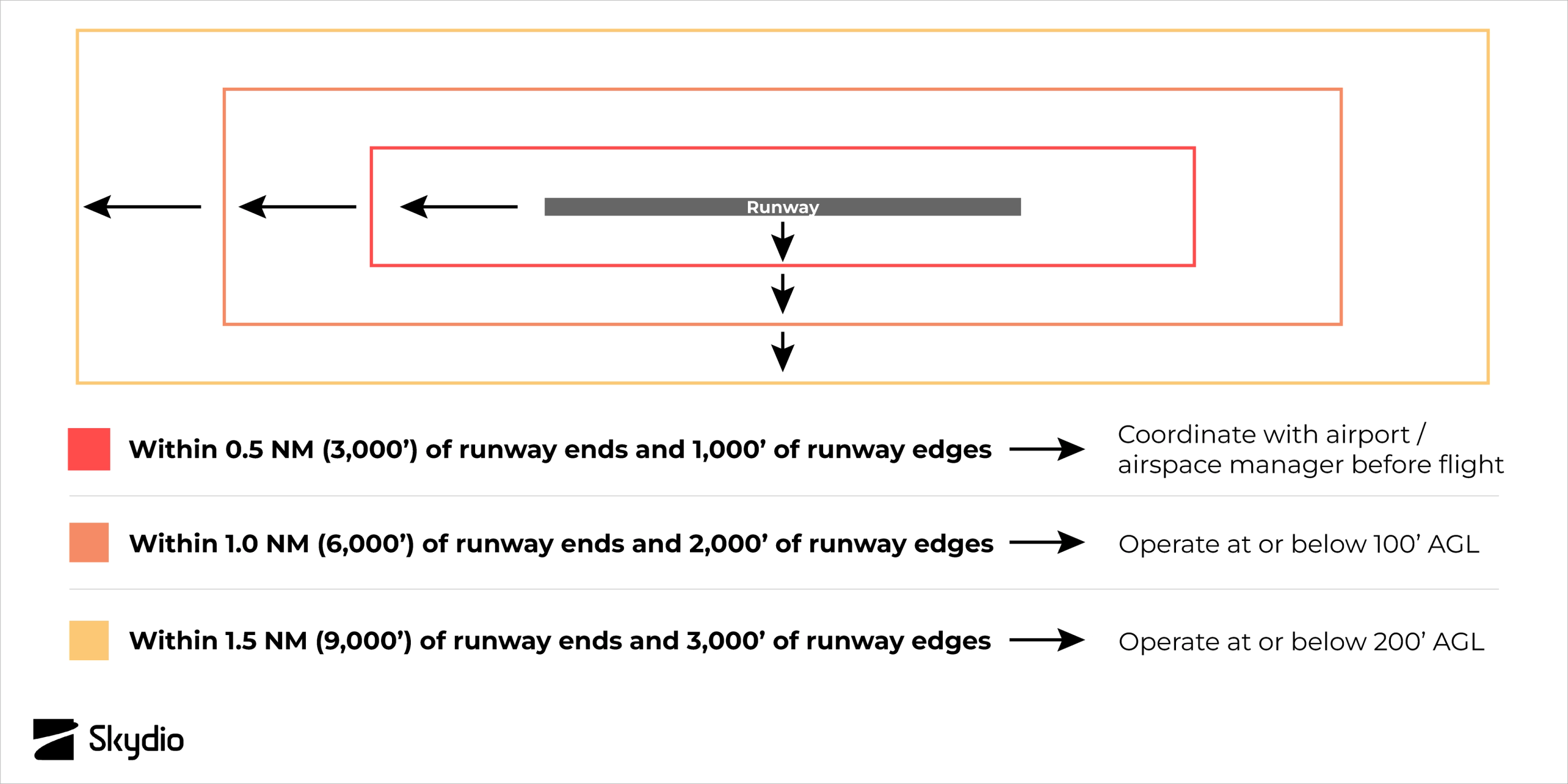
The Skydio Regulatory Team has built a tool to quickly generate a KMZ with these shapes from any US airport's runways. Send an email to aviation_regulatory@skydio.com with the airport name to get a KMZ.
It's then recommended to review these standoff distances and altitudes with the airport airspace manager directly, before submitting the COA application in CAPS, to review any areas of concern and further refine the airspace authorization request.
Step 5: Request Airspace Authorization in CAPS
The Skydio Regulatory Team has developed a guide for filling out the COA application in CAPS.
Frequently Asked Questions on the Part 91 BVLOS
How long does the FAA take to review a Part 91 BVLOS request?
The current time between submission and approval is approximately 1 week.
How long are these Part 91 BVLOS approvals valid for?
4 years
Can I get assistance obtaining this Part 91 BVLOS request?
Skydio’s Part 91 BVLOS Guide offers enough detail for an agency to navigate the process on their own. If the process looks daunting or your agency would prefer expert guidance through the process, Skydio offers a Regulatory Service that provides pre-filled documentation, one-on-one guidance during submission and FAA review, and support after approval to ensure your agency understands the types of operations allowed under the waiver. Contact your sales representative to learn more about pricing.
Does this Part 91 BVLOS waiver cover the X10 operations from a Dock and/or from a Controller?
BVLOS operations with Skydio X10 can be conducted with or without Dock and from X10 controller or DFR Command.
Does this Part 91 BVLOS waiver specify a maximum flight distance from the takeoff location?
200’ + ADS-B approvals: No. Flight distances are dependent on other factors such as airspace characteristics, battery endurance, and connectivity.
400’ approvals: It depends on the detect and avoid system. Operations up to 400’ will typically be limited to a range less than the maximum detection distance of the detect and avoid system.
Does the Skydio X10 comply with the ADS-B requirement to fly without Visual Observers?
Yes. Skydio X10 has a built-in ADS-B receiver that is capable of detecting aircraft transmitting ADS-B Out on 879 MHz and 1090 MHz. ADS-B data from the receiver is displayed on the X10 Controller and DFR Command for airspace awareness.
Do I need to purchase any additional hardware or software to use the ADS-B capability on the X10?
No, you don’t need to purchase additional hardware or software to use the ADS-B capability onboard the Skydio X10 drone.
What are the pilot training requirements to operate under a Part 91 BVLOS waiver? Do all my pilots need a Remote Pilot Certificate or can I self-certify them?
It’s important to understand that operations under this type of Certificate of Waiver are conducted under Part 91, not Part 107. Under Part 91, the agency self-certifies their flight crewmembers.
One common approach for public safety agencies is to use the FAA’s Remote Pilot Certificate as a method for self-certifying flight crewmembers. Then the agency conducts additional in-house training, which often includes training from the vendor. However, an agency could choose to develop an alternative approach.
No matter which option your agency chooses, flight crewmembers must have the appropriate aeronautical knowledge and skills to safely conduct drone operations in accordance with all local, state, and federal regulations.
Skydio Regulatory Team offers a service to assist your agency in developing a self-certification training program. Contact your Skydio Sales Representative for more information.
Can I get approval to operate above the UAS Facility Map altitudes in my jurisdiction?
The Part 91 BVLOS Certificate of Waiver allows operations in uncontrolled airspace up to 400’ AGL and operations in controlled airspace up to the UAS Facility Map altitude.
The waiver also includes a provision that gives agencies two options for operating above UAS Facility Map altitudes:
- Request a Certificate of Authorization in CAPS to conduct routine operations above UAS Facility Map altitudes
- Request a Special Government Interest (SGI) request to conduct operations on a case-by-case basis above UAS Facility Map altitudes
How does this approval compare to prior COA approvals like the Jurisdictional, Tactical BVLOS, or First Responder BVLOS COAs?
The new Part 91 BVLOS Certificate of Waiver (COW) allows two types of operations:
- Visual Line of Sight operations
- Equivalent to previous Jurisdictional COAs
- Beyond Visual Line of Sight without a Visual Observer
The FAA is no longer issuing Tactical BVLOS and First Responder BVLOS (BVLOS with a Visual Observer scanning airspace around the drone) approvals.
The Part 91 BVLOS Certificate of Waiver can likely replace any existing COAs your agency has, but it is up to your agency to compare the approvals and make a determination.
What are my options if I want to fly under Part 107 instead of Part 91?
It is possible to get a Part 107 waiver to conduct DFR operations, however the X10 parachute recovery system is a requirement to operate over people and moving vehicles under Part 107. Watch the Skydio website for announcements on the X10 parachute system.
Can I get approval to fly in zero grids?
To operate in a zero grid, your agency must first acquire the 200' or 400' Part 91 BVLOS COW described in Steps 1 and 2 above.
Once your agency has an approved COW, an airspace authorization (COA) request can be made in CAPS. Steps 3 - 5 describe how to accomplish this step and what to consider.
Additional Resources
References
The following FAA sources were used to develop this guidance and can provide additional details:
Feedback and Questions
If you find an error in this guide, have recommendations for improving it, or have questions, let us know by contacting the Skydio Regulatory Team at aviation_regulatory@skydio.com.

